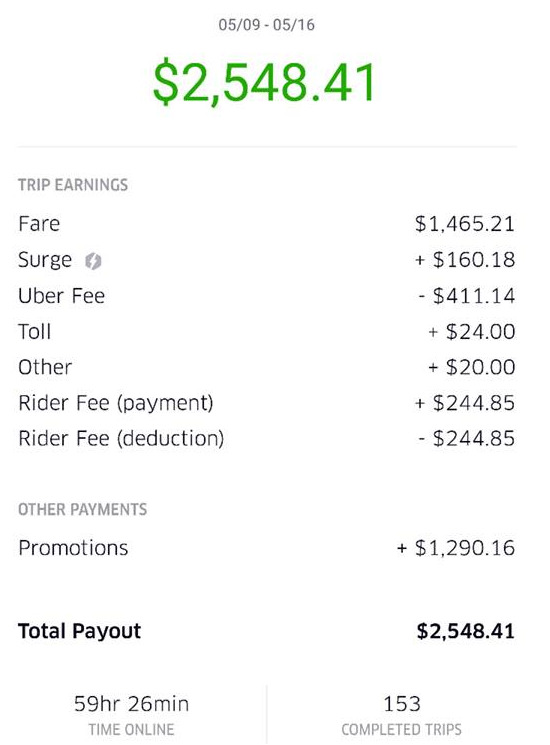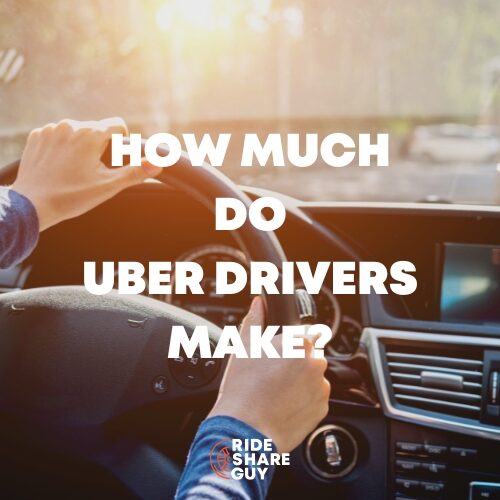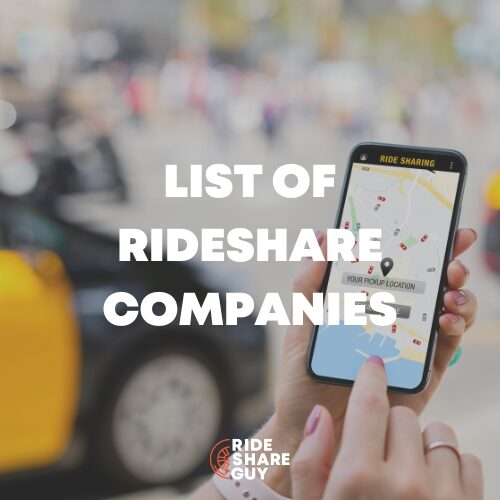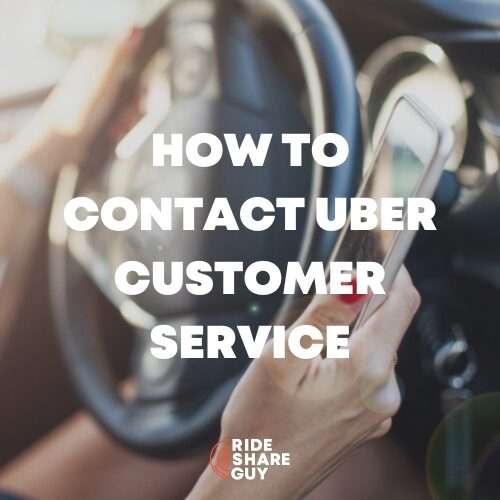Harry here. Uber and Lyft have been rolling out all sorts of different incentive programs, bonuses and guarantees this summer so we asked Senior RSG Contributor Christian Perea to take a look at them and explain how to leverage them to your advantage.
Uber has been rolling out various power driver programs over the last few months and savvy drivers have been able to cash in on thousands of dollars in extra incentive pay. One of the more popular programs is called Power Driver Plus, and it offers a cash payment from Uber upon completing a certain number of rides (among other requirements). If you’re in a city where Lyft is competitive with Uber like SF, LA or NYC, you may have seen this program, but it’s not the only incentive program out there.
Uber has also been offering the Metals program (Silver/Gold/Platinum), ‘Fare Boost’ and hourly guarantees in many cities, so even if you don’t have Power Driver Plus in your city, it’s likely that many or all of the strategies below will help you earn more money.
Related: The Battle For Power Drivers in CA: What It Means For Everybody
What is Uber’s Power Driver Plus Program?
Uber’s power driver programs appear in several different forms. The most popular is Power Driver Plus but there is also the “Metals” program in Los Angeles and Washington DC that incentivizes ride volume, although it rewards the driver differently. These programs pay a bonus based off of the number of rides completed during a week. You can start earning extra bonus money with as few as 30 rides and as many as 120 rides. Payouts vary from $50 to $500 and even occasionally include special offers like doing 10 rides on a Monday for an extra $100.

Here are the terms. They vary by city so make sure to read your email carefully and submit your questions/support tickets early in the week.
Related Article: Top 9 Ways To Contact Uber For Help
Acceptance Rate: The total amount of requests you “accept” divided by the total that you “receive”. I have seen the required acceptance rate vary between 67% and 90%. Make sure you check this criteria each week.
If you receive 10 total requests and only accept 8 of them, your acceptance rate would be 80%
Completion Rate: Some cities have a “completion” requirement. It is usually a bit lower than the Acceptance Rate and is calculated by taking the trips you “complete” and dividing it by the trip requests received. This seems to be a metric put in place to discourage accepting a trip and immediately cancelling it.
Location: There have been location components attached to these offers so make sure to check for them. Sometimes they are a wider area and sometimes they are for an entire market.
Power Driver Plus for San Francisco: More Info Here
The Power Driver Plus Strategy
Now that these programs are rewarding via the number of rides completed, you should figure out good places and times to get lots of short requests to buff your numbers. Evening weekdays around college campuses or transit locations are good spots to start. A good strategy will also play off of the benefits from other programs like Average Hourly Guarantees.
Don’t Wait Until The Weekend
Many drivers who procrastinate during the week will end up spending tons of time on the weekend trying to bring up their ride count at the last minute. When you also factor in the “Weekend Warrior” drivers, ON TOP of all the other drivers who procrastinated, it means that there will be a lot of driver saturation. This means you get fewer rides, drive more miles between them, and receive little surge.
If you do your best to focus on driving during the weekdays, there will actually be more surge pricing and higher ride volume for you since drivers tend to take weekdays off and the part-timers all have to go back to their 9-5. When you get to Friday you can actually call it a week and do something other than driving.
A Short Ride Strategy Becomes Important
It seems counter-intuitive to develop a strategy for short rides. But with a payout based on the number of rides completed, short rides and minimum fares are now valuable to drivers. If you can crank out many shorter fares in a lower amount of time, it allows you to target rides for profitability later on. Short rides can be found around college campuses, bus stops, transit centers, and bar areas.
Long Rides Become a Risk
In a situation where you stand to earn a high bonus for ride completions, long distance rides become unprofitable. A good Power Driver Plus Strategy will minimize long distance rides as best as possible. And drivers have found enterprising ways to avoid or get out of long distance rides.
Some drivers have started to text their passengers to screen them against long distance rides and then cancelling if the ride is too far outside the guarantee area. Not the best experience all around, but the way the program is set up, it somewhat encourages this type of behavior. If only rides in the core area of your city count towards the bonus, any ride requests you get outside the core won’t count towards the bonus. So you’ll have to turn your app off and then drive back to the core area costing yourself deadhead miles AND valuable time.
However, I still recommend taking long distance rides that are on a 1.7X surge or higher. You still will be making a lot of your money based off the fares you get, so if you have an opportunity for a good fare you shouldn’t cancel unless you are really at risk of not hitting your ride count for the week. It is also important to note that there is a risk of Uber locking you out for a period of time if you cancel too much. So play the cancel game carefully and strategically.
Start Early. Stress Less.
Your Power Driver Plus strategy should start early in the week. In some markets, Uber will stack an additional $100 on your weekly bonus if you complete 10 rides on a Monday. Why? Because Monday’s are a hidden gem of business for drivers.
Most people tend to put off driving until Wednesday and then drive through the weekend. Mondays have a generous number of rides because all of the weekend part-time drivers have to go back to their day jobs. Meanwhile, a large portion of the full-time drivers are trying to catch up on sleep after driving 48 hours straight over the weekend.
In the past, it was generally most profitable to drive during times of high demand like Friday and Saturday nights, but with the ever increasing number of drivers and lower rates, now you need to also factor in when the fewest number of drivers will be out and about. That way, even if there isn’t a ton of demand, if you’re the only driver out, you’ll get the requests and maybe even some surge pricing.
Finish Early? Switch to Another Platform.
The Wanderer is a driver in SF who does an insane number of rides. He tells me he likes to get all of his Power Driver Plus rides for Uber done by Friday and then switch over to Lyft for the weekend. Since most of the other drivers are chasing the Uber bonus, there is a shortage of drivers on Lyft during this time. This means all of the other drivers can’t switch because THEY NEED an extra 30-40 rides.
Once you get your ride count from Uber, you should focus on wherever you stand to make the most money. Weigh Surge against Primetime, volume of rides, and delivery options for tips and an easier crowd on the weekends.
Take Breaks/Plan Driving Blocks
From what I have gathered, it takes between 35 and 45 hours to get the maximum rides for this program. So a good Power Driver Plus Strategy should factor in proper breaks since you will be on the road much more than normal. The longer you are on the road, the greater the probability of an accident.
Every full-time driver I know has been in at least one fender-bender. All of them. Myself included. When you are on the road for long periods of time, things tend to run into you.
UberPool
Each ride you do on UberPool counts towards your weekly ride count. So if your UberPool gets two pickups, it will count as two rides towards your goal. UberPool can actually help your Power Driver Plus strategy during hourly guarantees by racking up a higher ride count.
Related Article: What Should Drivers Expect From UberPool?
Average Hourly Guarantees (AHG’s): Leverage Them to Your Advantage
Another factor in the Power Driver Plus Strategy involves hourly guarantees. Uber continues to run AHG’s in many markets. So how do you play both of them?
Make sure to take note of the terms and conditions for Hourly Guarantees since they tend to have tighter constraints. Uber usually runs their Hourly Guarantees during peak hours, so it’s smart to focus on your short ride strategy during this time. You won’t have to worry as much about your payouts on shorter rides since Uber will cover them, and they will also count towards your Power Driver Plus tally.
Related Article: What To Make of The 2016 Uber Hourly Guarantees
A good Power Driver Plus strategy depends on leveraging this program to your benefit by focusing on shorter rides during these hours. The drawback for this is that you may get a long ride during these hours. Since you are on an hourly guarantee AND you get paid by volume in this scheme, long rides really are not in your best interest. This has meant many drivers cancel on long trips or screen their passengers for their drop-off location. If you do this, take note that Uber is starting to catch on to it.
Fare Boost: Better Than AHG’s
A few weeks ago, Uber started to send me emails saying any ride I did during certain blocks of hours would be on a certain surge multiplier or what they call an Earnings Boost. It ranged from 1.3X to 2.0X and focused on the same hours as the previous hourly guarantees.
I think this is a better deal for drivers and passengers because it encourages drivers to take longer rides while placing a lower priority on trip requirements. I just think it might be really expensive for Uber to operate in the long term. That being said, it was speaking my language and I definitely plan to drive during at least the morning hours since it seems simpler than AHG’s.
The Precious Metals Program
Many drivers in Los Angeles and Washington DC are being offered bonuses via the “Metals” program. In this program, drivers are paid out a certain surge multiplier for their rides based on the “metal” they qualified for in the previous week. Presently it’s set at 25 rides for Silver, 50 rides for Gold, and 75 rides for Platinum. If you do those rides in week 1, then you will qualify for an automatic surge multiplier in week 2 for rides that occur during certain times within the core LA area.
There is also some evidence on UberPeople that Uber will prioritize rides for drivers on the Metals program, so keeping your ride count up may be more important than ever before. Further, if you stop driving for a week you will automatically lose your metal status until you garner enough rides when you begin to drive again. This program is still based on the frequency of rides, so it actually has a similar strategy to Power Driver Plus.
When Done Properly:

RSG reader Da Xi has spent some time driving full-time. He has developed an excellent Power Driver Plus strategy. He was kind enough to send us a screenshot of his weekly payout after getting paid out for Power Driver Plus and AHG’s. He has been consistent in these numbers when he drives full-time as I have seen similar screens from him posted online. So he knows his stuff.
He is also an aspiring actor who was featured in a commercial for Jaguar. He gave a Lyft to the company that was producing their commercial and landed a gig by driving quickly, confidently and efficiently. You can see him included in the actual commercial here. 😉
A lot of the strategies presented here will vary based on your market but there are common elements to all the programs. It seems that a lot of this is geared towards subsidizing lower Uber fares for passengers and making sure that drivers are still incentivized to drive for Uber. All the while, it locks both drivers and passengers into the Uber platform. For now, these are here to stay and they seem to be expanding slowly to other markets. So leave a comment below telling us if it has come to your city or tell us what we missed!
Readers, what do you think of this strategy and what’s your strategy in your market?
-Christian @ RSG
Save
Save






